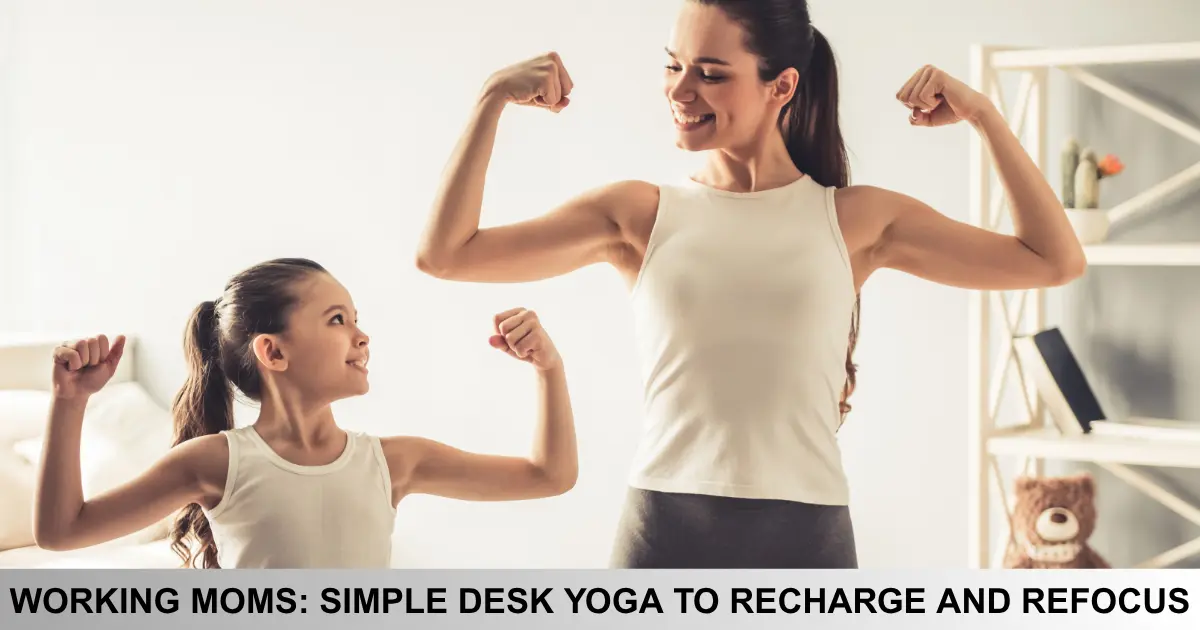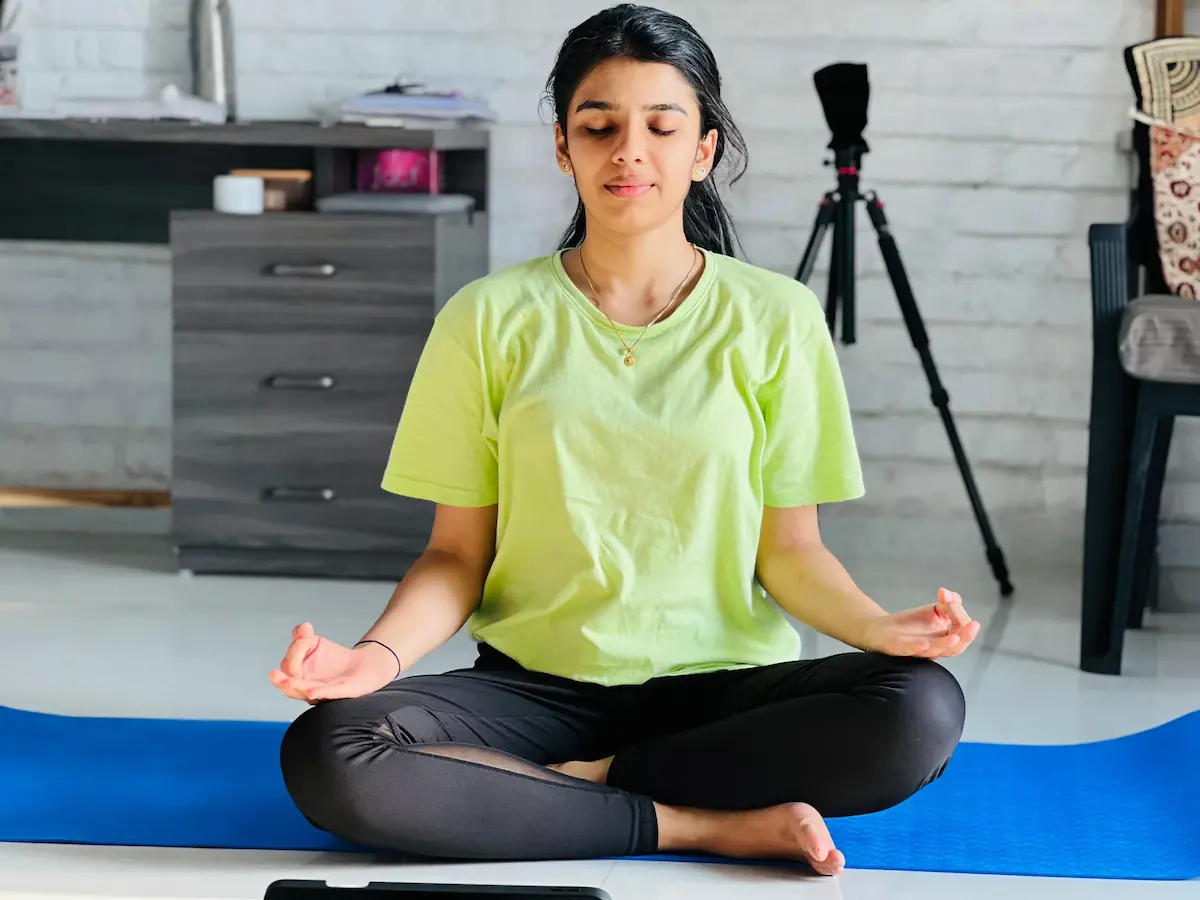Being a working mom means wearing countless hats professional, caregiver, partner, chef, chauffeur, and so much more. In the flurry of meetings, deadlines, and family responsibilities, your own health usually ranks last. But here’s the truth: when you nurture yourself, you become even more powerful for those who rely on you.
This guide honors the superhero spirit of working moms, spotlighting yoga as a potent tool to restore wellbeing, energy, and calm, even for just a few minutes at your desk.
Why Working Moms Need Desk Yoga
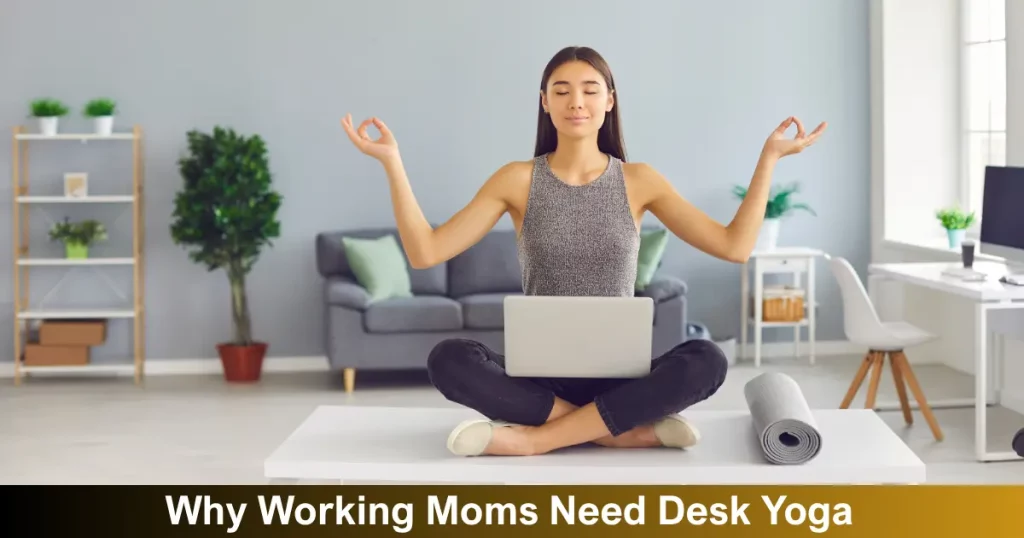
Long work hours, skipped meals, and ignoring minor aches have become the “new normal.” Over time, these habits sap your energy, compromise posture, disturb sleep, and wear down your emotional resilience. Enter desk yoga simple stretches that fit into your busiest days.
Desk yoga:
- Needs no mat or change of clothes.
- Takes just 5–10 minutes during breaks.
- Recharges your body and sharpens your focus.
- Alleviates the aches and stiffness of sitting too long.
In the long run, regular desk yoga improves flexibility, posture, and emotional balance making you a healthier, happier mom and professional.
6 Yoga Stretches You Can Do at Your Desk
You don’t need a yoga studio or extra time. Try these convenient poses right now:
1. Seated Spinal Twist (Ardha Matsyendrasana)
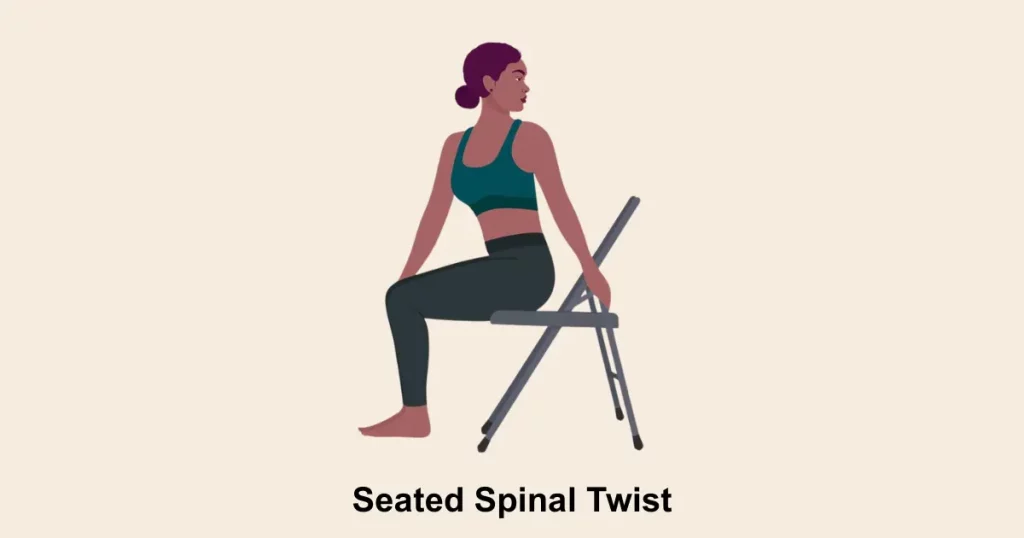
How to do it:
- Sit upright in your chair, feet flat on the floor.
- Place your right hand on your left knee. Place your left hand behind you on the chair.
- Inhale, lengthen your spine.
- Exhale, gently twist your torso to the left. Look over your left shoulder.
- Hold for 3–5 breaths. Return to center and switch sides.
Benefits:
- Relieves back pain and tension.
- Improves spinal flexibility.
Tips/Precautions:
- Avoid forcing the twist. Keep your movements gentle.
- Pregnant women and those with serious back issues should consult a doctor first.
2. Seated Forward Bend (Paschimottanasana Variation)
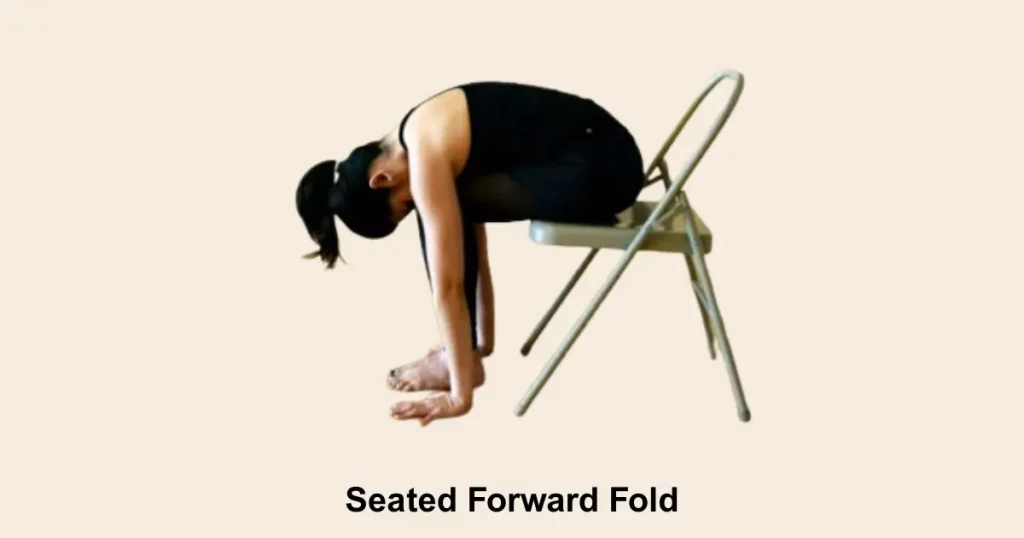
How to do it:
- Sit with feet flat on the ground, hip-width apart.
- Inhale, raise your arms overhead.
- Exhale, hinge at the hips, bending forward. Allow your torso to rest on your thighs.
- Let your head and arms drape toward the floor.
- Hold for 3–5 deep breaths, then slowly sit up.
Benefits:
- Stretches back and hamstrings.
- Calms the mind and relieves stress.
Tips/Precautions:
- Move slowly to avoid dizziness.
- If you have lower back pain, keep the bend shallow.
3. Seated Eagle Arms (Garudasana Arms)
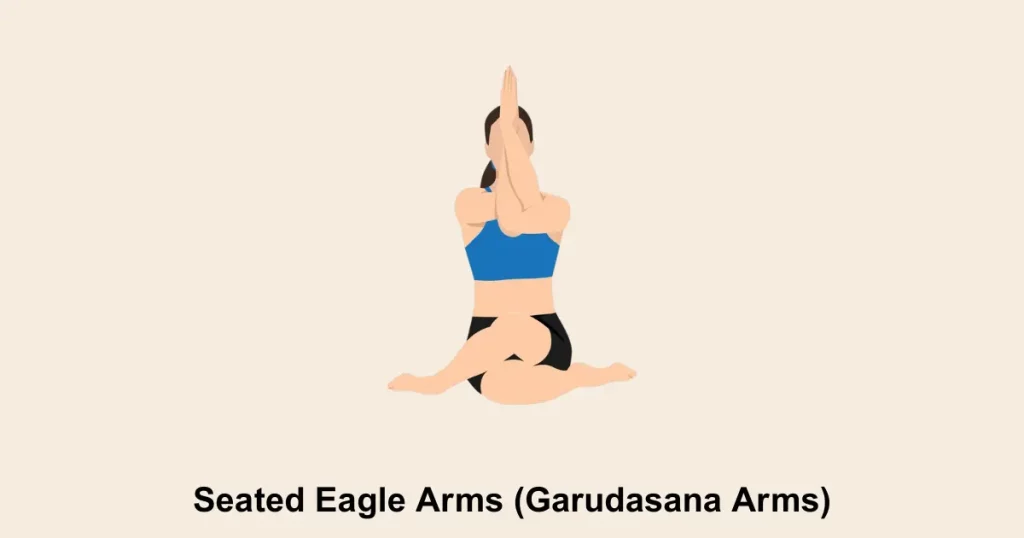
How to do it:
- Sit tall, arms extended in front.
- Cross your right arm under your left at the elbows.
- If possible, wrap forearms so palms touch; otherwise, place backs of hands together.
- Lift elbows while dropping shoulders.
- Hold for 3–5 breaths. Repeat with opposite arm on top.
Benefits:
- Opens tight shoulders and upper back.
- Improves focus and concentration.
Tips/Precautions:
- Don’t force your arms into the full wrap just cross as much as is comfortable.
4. Seated Pigeon Pose (Modified Eka Pada Rajakapotasana)
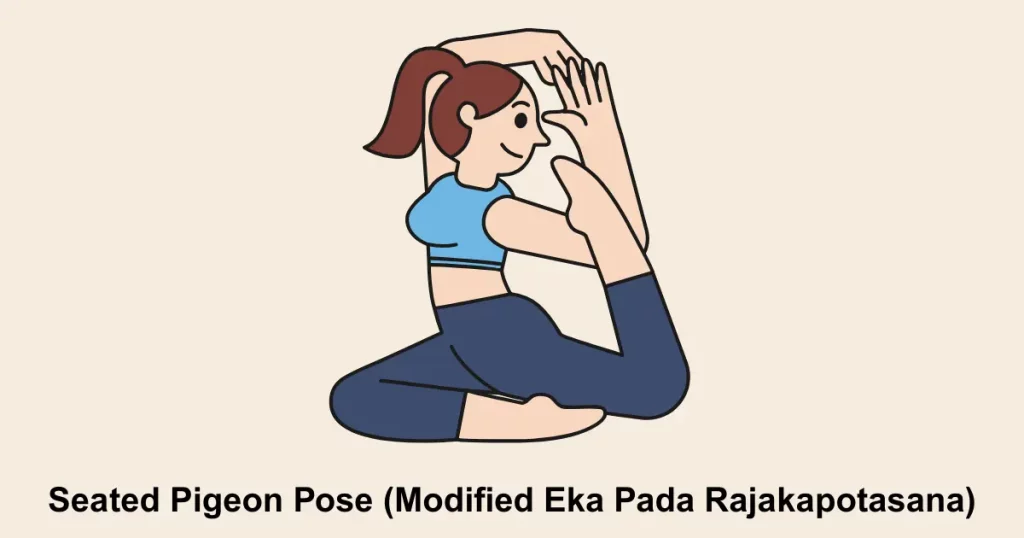
How to do it:
- Sit tall, feet flat on the floor.
- Cross your right ankle over your left knee, forming a “figure four.”
- Flex your right foot and gently press your right knee downward.
- Hold for 3–5 breaths. Switch legs.
Benefits:
- Opens hips, reduces lower back pain.
- Eases tension from prolonged sitting.
Tips/Precautions:
- Keep your spine straight. Don’t press the knee down if it causes pain.
- Skip if you have recent hip or knee injuries.
5. Seated Side Stretch
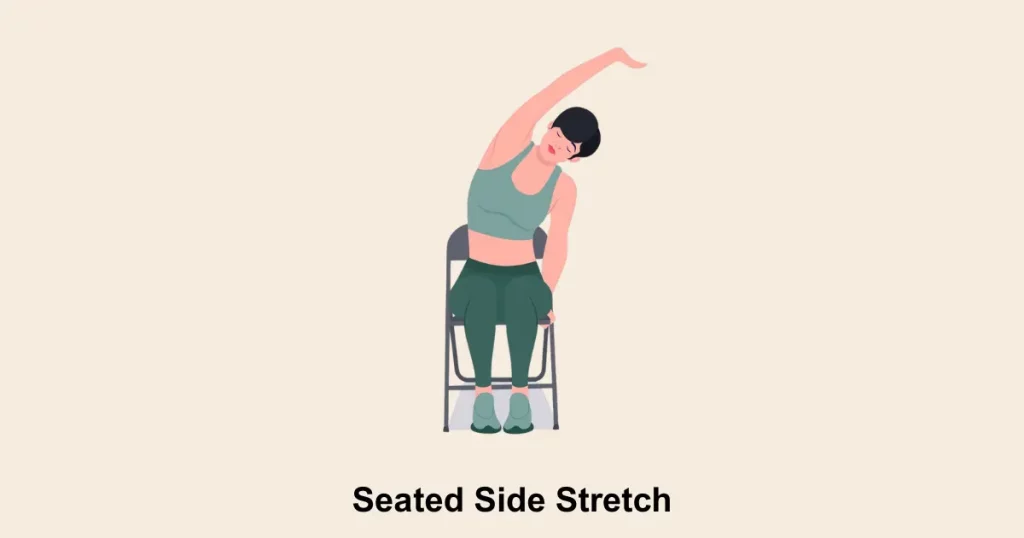
How to do it:
- Sit straight, feet grounded.
- Inhale, lift your right arm overhead.
- Exhale, gently lean left, feeling a stretch along your right side.
- Hold for 3 breaths, then switch sides.
Benefits:
- Stretches obliques and side body.
- Improves posture and breathing.
Tips/Precautions:
- Do not collapse your chest or twist forward; keep both sit bones rooted.
6. Seated Neck Stretch
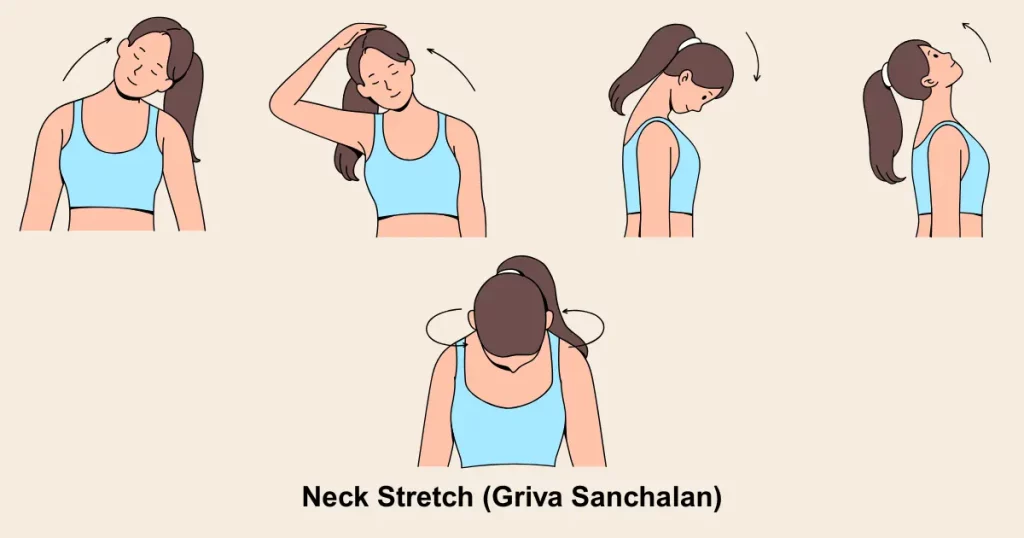
How to do it:
- Sit comfortably, shoulders relaxed.
- Bring your right ear toward your right shoulder.
- Hold for a few breaths, feeling the stretch on the left side.
- For a deeper stretch, gently rest your right hand on your left ear (no pressure).
- Repeat on the other side.
Benefits:
- Eases tension in neck and shoulders.
- Prevents headaches from desk work.
Tips/Precautions:
- Move slowly, never force the stretch.
- Why Your Mind Wanders During Meditation
- Beginner Yoga Poses for Stress Relief
- Yoga vs Gym: Which is Better for Mental Health?
Tips for Success
- Consistency is key: Even a few minutes daily makes a difference.
- Listen to your body: Avoid pushing into pain; modify as needed.
- Stay hydrated and take screen breaks: Help your body recover.
- Remember: You don’t need perfection, just regular practice.
Frequently Asked Questions (FAQ)
Q: How much time do I need for desk yoga?
A: Just 5–10 minutes can improve your mood, posture, and flexibility.
Q: Do I need to be flexible to start yoga?
A: Not at all! These stretches are gentle and adaptable for all levels.
Q: Can I do these poses in my office clothes?
A: Yes. All are designed for busy workdays no special gear necessary.
Q: What if I have a previous injury?
A: If you have chronic pain or recent injuries, consult your healthcare provider before starting any new exercise routine.
Q: How do I stay motivated?
A: Find a supportive community, set reminders, or join a group challenge consistency matters more than intensity.
Wrapping It Up
Dear working moms: You are the early risers, the bridge between home and work, the foundation for many. Remember, self-care is not selfish it’s essential. These easy desk yoga stretches can be your small, loving investment toward feeling recharged, centered, and strong. No need for a perfect moment or fancy gym just begin where you are, one mindful breath and stretch at a time.
